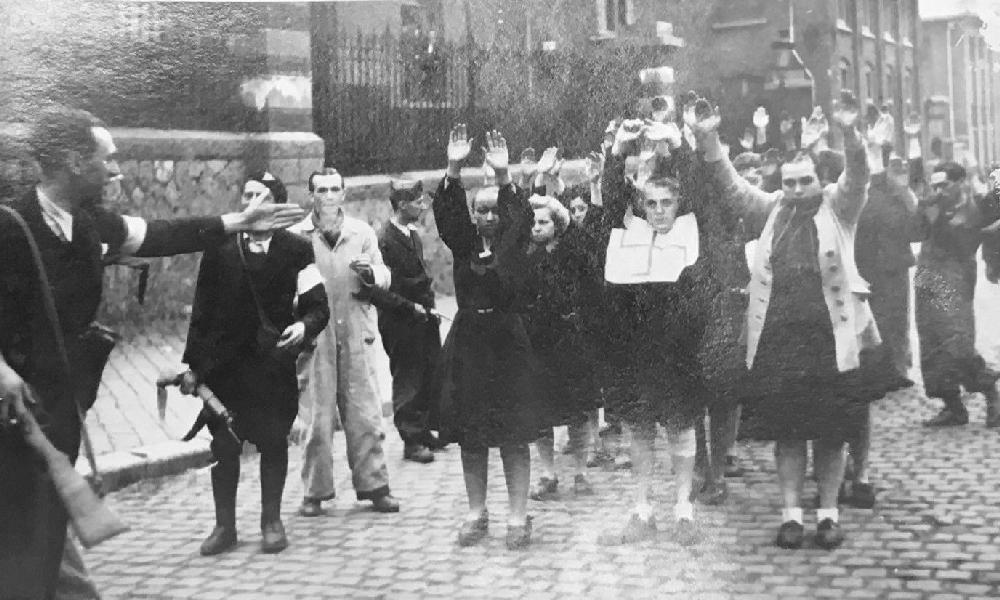
World War II: European Liberation--Dealing with Collaborators

Figure 1--Here we see FFI resustance men after liberation after shaving the hair off these young French women, prading them around. It could have been taken in Paris, but any French city is possible. Many men who collaborated were shot in the aftermath of liberation (probably August 1944). The women who associted with the Germans were mostly humiliated like this. This was the general pattern throughout Europe. Notice that there are men in the group. They are unlikely to get off as lightly as the women. We are not sure whoo took the photogram, but it was passe by U.S. Army censors.
|
|
Immediately upon liberation, the question of dealing with the collaborators arose. And adter street justice was delt out and the process became more a juridical matter, which meant that punishable collaboration had to be defined. This is more complicated than what may be thought at first glance. It was not possible not to collaborate unless one found a rifle and took off for the xiybretsideand this was not even possible in some countrues like Denmark and the Nettherlands. People had to register and work to obtain food. And ethis aided the occupyong forces. What became punishable was individuals who went out of their way to support the occupiers out of beliefs or for some benefits. Here while such people may not be odious or violating any law, they surely can be seen to have engaged in shaeful behavior. Whart the French called vertical collaborators, the wommen who engaged in relations with the Germans did put others at risk, but suely were women without strong ideas of right and wrong. Some were were young women caught governed by their emotions. Others were simply after the benefits such as food and clothing the occupiers could provide. Especially odious here were those who aided the occupying powers at the expense of others, by joining the forces of oppression or reporting on others. Some of the same actions occurred in all pf the liberated countries, but there were differences depending on who the occupier was and who the liberator was. Germany was the main Axis country and the primary occupier. Germaby's Axis allies, however, also had occupation roles. And the issue of Axis allies comes up in how to define collaboration. This changed the legal dynamic, but most of these countrues seized by the Soviets who were not concernd with legal niceties.
CIH--WW II

Navigate the CIH Wold War II Section:
[Return to World War II: Liberation of Europe]
[Return to World War II: Liberation]
[Return to Main World War II liberation, defeat, and victory page]
[Return to Main mass killing page]
[Biographies]
[Campaigns]
[Children]
[Countries]
[Deciding factors]
[Diplomacy]
[Geo-political crisis]
[Economics]
[Home front]
[Intelligence]
[Resistance]
[Race]
[Refugees]
[Technology]
[Bibliographies]
[Contributions]
[FAQs]
[Images]
[Links]
[Registration]
[Tools]
[Return to the Main World War II page]
[Return to Main war essay page]
Created: 6:46 PM 3/26/2018
Last updated: 6:46 PM 3/26/2018



